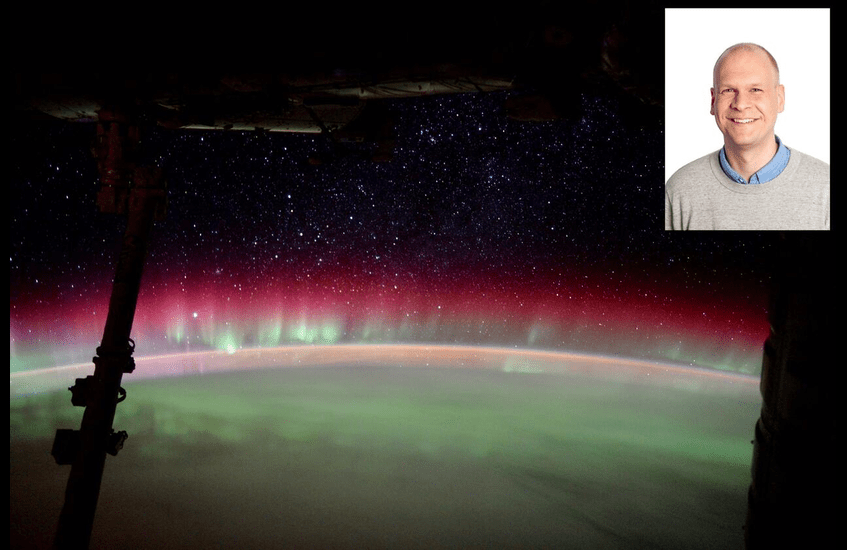The aurora above Earth as seen from the International Space Station. Photo: NASA
«This is really great news»! Space scientist Karl Magnus Laundal at the Birkeland Centre for Space Science, University of Bergen, is both excited and very happy after today’s announcement from the European Research Council (ERC). Around lunchtime, it was announced that Laundal will be among the researchers awarded this year’s «ERC Consolidator Grants». These are stipends with a considerable economical framework in the order of 2 million Euros. According to Laundal, the money will be spent on a project to unveil the coupling between the Earths atmosphere and space.
 Researcher Karl Magnus Laundal. Photo: UiB
Researcher Karl Magnus Laundal. Photo: UiB
«When colorful aurora lights up a dark sky, this phenomenon is in fact a visual manifestation of the interaction between plasma from space and the Earths atmosphere. However, even though this interplay has been known for decades, there are still many unresolved mysteries» Laundal explains, and refers to a remarkable discovery from his own doctoral thesis more than 10 years ago: «Thanks to satellite measurements recorded simultanously above the Earth’s northern and southern hemispheres, we were able to show that the northern and southern lights can be completely different. Though still today, we are not able to explain why this asymmetry occurs» says Laundal.
 The groundbreaking research result by then PhD candidate Karl M. Laundal and his supervisor Nikolai Østgaard was put on the front page of the prestigious journal Nature on July 23, 2009.
The groundbreaking research result by then PhD candidate Karl M. Laundal and his supervisor Nikolai Østgaard was put on the front page of the prestigious journal Nature on July 23, 2009.
Develop a 3D Model
In the new project, Karl Magnus Laundal will replace the two-dimensional space-atmosphere coupling models currently used in the space community with a three-dimensional numerical model yet to be developed. Such an «upgrade» will make for a much more realistic representation of the laws of Physics.
Another main limitation today is that most measurements suffer from poor spatial and/or temporal resolution. However, this may soon be about to change: «In a short time we should expect high-resolution measurements of plasma and magnetic fields from NASA’s EZIE satellites and from the new EISCAT3D radar system, which means that this will be a perfect time to start developing our model», an excited Laundal explains.
Important to monitor Space Weather
Even though it is the curiosity to understand the world that drives Karl Magnus Laundal, he acknowledges that his research will provide much needed information to understand space weather. «In today’s world, our satellites and airplanes are vulnerable during periods with increased interplanetary and geomagnetic activity. Also, another problem may arise from the fact that space weather may cause perturbations on the ground, causing blackouts in the electric power grid», Laundal says.
About Karl Magnus Laundal
Karl Magnus Laundal has been working at the Birkeland Centre for Space Science (BCSS) since 2013, when BCSS was named a «Centre of Excellence» by the Research Council of Norway. At the moment he is in charge of the largest research group at the Birkeland Centre known as «Dynamics of the AsymmeriC Geospace», and also he currently supervises five PhD candidates. In 2019, Laundal was awarded a Starting Grant from the Trond Mohn Foundation for the project «What shapes space?».




